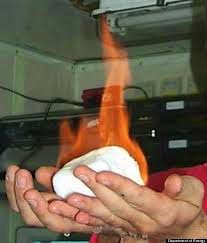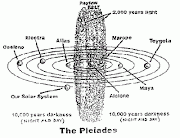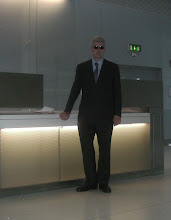Tweezers device, named the nano-kelvin thermometer, is three times more than the best thermometers sets in existence. That it is so required scientists claim They are able to measure the temperature changes of objects as Their atoms move around.
The most sensitive thermometer ever made Measures temperature to 30 billionths of a degree - and it's made of light. The thermometer is three times more accurate than current systems. It works by circulating green and red light around a disc-shaped crystal. As the crystal heats up, the red light slows down compared to green light. By forcing the light to circulate thousands of times, scientists can measure the difference in speed - and as a result temperature - with great accuracy. Scientists have developed the world 's most sensitive thermometer capable of measuring temperature to 30 billionths of a degree. This device, named the nano-kelvin thermometer, red and green light forces to circulate Thousands of times around the edge of a disc-shaped crystal. That it is so required scientists are able to measure the temperature changes of objects as Their atoms move around.
Wise labs believe this is the best measurement ever made of temperature even true space or at room temperature,.' Said project leader Professor Andre Luiten from the University of Adelaide 'To emphasise specify how this is, When we examine the temperature of an object we find That it is always fluctuating. If as wise 'all knew that if you looked closely enough That you find all the atoms in the material are always jiggling with out any acerca, but we actually see this unceasing fluctuation with our thermometer, showing microscopic that the world is always in motion as new mathematical term.'The University of Adelaide claim its device is required three times more than the best thermometers in existence (stock image used) According to the journal Physical Review Letters, the technique Involves forcing red and green light to circulate Thousands of times around the edge of a disc -shaped crystal. The device, named the nano-Kelvin thermometer, red and green light forces to circulate.
This Thousands of times around the edge of a disc-shaped crystal. This resonating sound in light behaves like a 'whispering gallery' - where you whisper near a curved wall and the sound travels around the inside of the wall and you can hear it on the other side of the room.
A Similar effect happens with light as it races around the disc, Causing the speed of the light in the crystal changes Depending on the temperature of the disc. By measuring the relative differences between the speed of the 'red and green light' to blue, the Researchers can measure temperature changes within its disc to 30 billionths of a degree. The technique required is 3 times more than the best of the available temperature sensors. The two colours travel at slightly different speeds, Depending on the temperature of the crystal. So when we heat up the crystal we find That the red light slows down by a tiny amount with Respect to the green light,' said Professor Luiten. 'By forcing the light to circulate Thousands of times around the edge of this disk in the same way That Sound concentrates and Reinforces itself in a curve in a phenomena known as a "whispering gallery" - as seen in St Paul's Cathedral in London or the Whispering Wall at Barossa Reservoir -. then we can measure this minuscule difference in speed with great accuracy 'The technique used for Could be ultra-sensitive measurements of other things Such as pressure, humidity, force or the Concentrations of explosives. 'Being able to measure many different aspects of our environment with Such a high degree of precision, using instruments small enough to carry around, has the capacity to evolutionize technologies used for a variety of industrial and medical applications where detection of trace amounts has great ideas importance , 'Professor Luiten said.
Wednesday 11 June 2014
Subscribe to:
Post Comments (Atom)







No comments:
Post a Comment